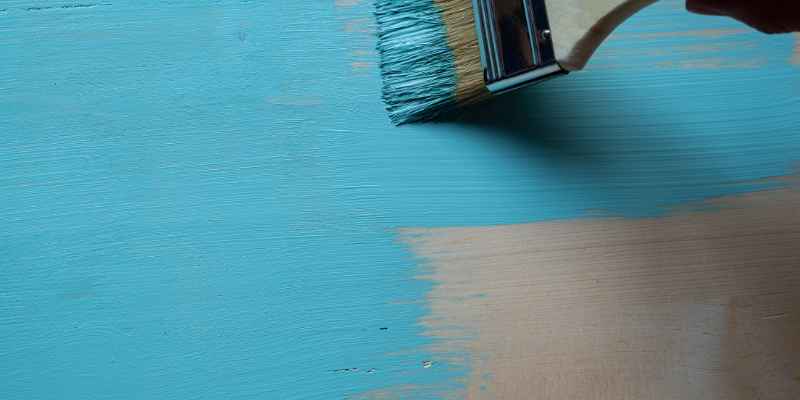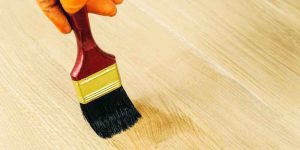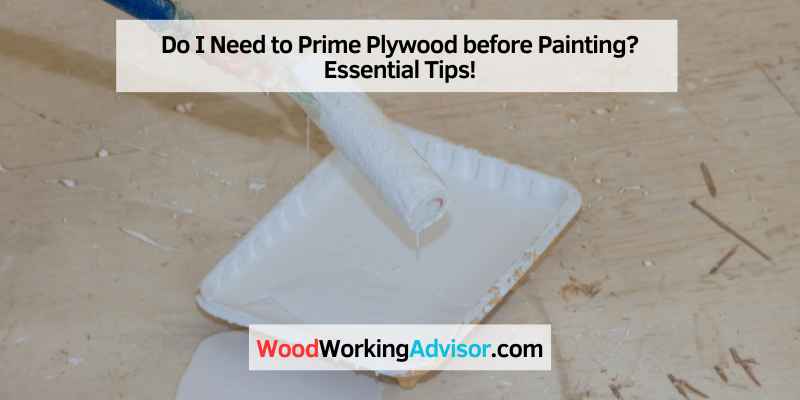Yes, it is necessary to prime plywood before painting to ensure better adhesion and a smoother finish. Priming helps seal the wood surface, preventing the paint from being absorbed unevenly and reducing the chance of peeling or flaking.
It also helps to create a more durable and long-lasting paint job. By applying a primer specifically designed for use on wood surfaces, you can enhance the overall appearance and longevity of your painted plywood project. Whether you are painting furniture, cabinets, or any other plywood surface, taking the time to prime beforehand will yield better results in terms of color vibrancy and paint adhesion.
Importance Of Priming Plywood
When it comes to painting plywood, the importance of priming cannot be overstated. Priming plywood before painting is crucial to achieve a smooth, long-lasting finish. Not only does it provide a stable base for the paint, but it also enhances the adhesion and durability of the paint, resulting in a professional-looking result.
Benefits Of A Primed Surface
Enhanced Adhesion: Primer creates a bond between the paint and the plywood, preventing peeling and flaking.
Improved Coverage: It helps the paint to spread evenly, reducing the number of coats required for full coverage.
Longevity And Durability Of Paint On Plywood
Preventing Moisture Damage: Priming plywood seals the surface, protecting it from moisture and humidity, which can cause warping and rotting.
UV Protection: A primer with UV inhibitors can shield the plywood from sunlight, preventing the paint from fading and deteriorating over time.
Types Of Primers For Plywood
When it comes to painting plywood, using a primer is essential to ensure a smooth and long-lasting finish. Different types of primers are available for plywood, each with its own unique properties and applications. Understanding the types of primers for plywood can help you choose the right one for your painting project.
Oil-based Primers
An oil-based primer is an excellent choice for plywood due to its superior adhesion and ability to seal porous surfaces. It provides excellent coverage and can effectively block stains and tannins, ensuring a uniform finish. The slow drying time allows for better penetration into the plywood, resulting in a strong bond for the paint.
Latex-based Primers
Latex-based primers are popular for their quick drying time and low odor. They are easy to clean up with water and offer good flexibility, making them suitable for plywood surfaces. These primers also provide excellent adhesion and can be used with both latex and oil-based paints, offering versatility for different painting projects.
Shellac-based Primers
Shellac-based primers are known for their excellent stain-blocking properties and ability to seal knots in the wood. They dry quickly and provide a solid base for paint adhesion. Additionally, shellac-based primers are effective in preventing the natural resins and oils in plywood from bleeding through the paint, ensuring a flawless finish.
Preparing Plywood For Priming

Sanding For A Smooth Finish
Sanding plywood is crucial for achieving a smooth finish. Start with coarse sandpaper to remove any rough spots or uneven areas. Then, switch to finer grit sandpaper to create a smooth surface for the primer to adhere to.
Cleaning The Surface
Before priming, it’s essential to thoroughly clean the plywood surface. Use a damp cloth to remove any dust, dirt, or debris. This will ensure that the primer can bond properly with the plywood, leading to a more durable and professional-looking paint job.
Addressing Knots And Imperfections
Knots and other imperfections in the plywood can affect the final appearance of the paint. Prior to priming, it’s important to fill any knots or gaps with wood filler and sand them smooth. This extra step will result in a more polished and flawless paint finish.
Application Techniques
When it comes to painting plywood, mastering the right application techniques is crucial for a professional finish.
Brush Vs. Roller Vs. Spray
- Brush: Ideal for small areas and detailed work.
- Roller: Best for large, flat surfaces for quick coverage.
- Spray: Provides a smooth finish but requires proper ventilation.
Applying Even Coats
Ensure each coat is applied evenly to prevent drips and promote adhesion.
Drying Times And Conditions
- Allow sufficient drying time between coats for best results.
- Optimal conditions include low humidity and moderate temperature.
Choosing The Right Primer
When it comes to painting plywood, priming is a crucial step in achieving a smooth and long-lasting finish. Choosing the right primer for your project can make all the difference in the overall quality of your paint job. In this post, we’ll discuss the importance of choosing the right primer, and how to match it with your paint type, consider the project environment, and choose the right brands and cost-effective options.
Matching Primer With Paint Type
Choosing the right primer for your plywood project largely depends on the type of paint you plan to use. For example, oil-based paints typically require an oil-based primer, while water-based paints work best with a water-based primer. Matching the primer and paint type ensures that the paint adheres properly and lasts longer.
Considering The Project Environment
The environment in which the plywood will be used should also be taken into consideration when choosing a primer. If the plywood will be exposed to moisture or extreme temperatures, a primer with extra protection against these elements may be necessary. Additionally, if the plywood will be used in a high-traffic area, a durable primer that can withstand wear and tear will be important.
Brands And Cost-effectiveness
While choosing the right primer is important, it’s also essential to consider the cost-effectiveness of different brands. Some brands may be more expensive than others, but offer superior quality and durability. It’s important to find a balance between quality and affordability. Reading reviews and getting recommendations from professionals can also help you make an informed decision.
Overall, choosing the right primer for your plywood project is crucial in ensuring a smooth and long-lasting finish. By matching the primer with your paint type, considering the project environment, and choosing the right brands and cost-effective options, you can achieve a high-quality paint job that will last for years to come.
Common Mistakes To Avoid
To ensure a smooth painting process, it is essential to prime plywood before painting. Skipping this step can lead to uneven paint absorption and a lackluster finish. Proper priming helps seal the wood, enhances paint adhesion, and promotes a more professional-looking result.
Skipping Sanding
Sanding plywood before priming is crucial for proper adhesion.
Avoid skipping sanding to ensure a smooth finish.
Using The Wrong Type Of Primer
Choose a suitable primer for plywood to prevent peeling.
Avoid using the wrong type of primer for best results.
Neglecting Proper Drying Time
Allow primer to fully dry before applying paint.
Avoid neglecting proper drying time to avoid issues.
Top Tips For Professional Results
For professional painting results on plywood, it’s recommended to use a primer before painting. The primer helps to seal the wood and provide a smooth surface for the paint to adhere to. Skipping this step can result in an uneven finish and paint peeling over time.
When it comes to painting plywood, using a primer can make all the difference in achieving a professional finish. However, there are a few tips and tricks to keep in mind when priming plywood to ensure the best possible results. Here are some top tips to consider:
Testing Primer On A Small Area
Before you start priming your entire plywood surface, it’s a good idea to test the primer on a small, inconspicuous area first. This can help you determine how many coats you need and whether the primer is compatible with the type of plywood you are using. It can also help you spot any potential issues before you commit to priming the entire surface.
Layering Techniques For Depth
If you want to add depth and dimension to your plywood surface, consider using layering techniques when applying primer. This involves applying multiple thin coats of primer, allowing each coat to dry completely before applying the next. This can help create a smooth, even surface and can also help minimize any visible brushstrokes.
Sealing Edges For Moisture Protection
Plywood is susceptible to moisture damage, which can cause the wood to warp or split over time. To prevent this, it’s important to seal the edges of your plywood before priming. This can help protect the wood from moisture and can also help create a more even surface for the primer to adhere to.
In conclusion, priming plywood before painting is a crucial step in achieving a professional finish. By following these top tips, you can ensure that your plywood surface is primed properly and ready for painting.
After Priming: Painting Plywood
Priming plywood before painting is essential to ensure a smooth, lasting finish. It helps seal the surface and enhances paint adhesion for a professional look. Make sure to use a quality primer suitable for wood surfaces to achieve the best results.
Best Practices For Paint Application
When it comes to painting plywood, applying paint requires a certain level of skill and knowledge. While the process may seem simple, there are a few best practices you should keep in mind to ensure your painted plywood looks its best.
Firstly, make sure you’re using a high-quality paint that’s suitable for the plywood’s intended use. Secondly, always stir the paint thoroughly before applying it to the plywood. This helps to ensure a consistent color and texture throughout the project. When it comes to applying the paint, use a high-quality brush or roller to achieve a smooth and even finish. Be sure to work in small sections and apply the paint in thin, even coats to avoid drips and uneven coverage.
Maintenance Of Painted Plywood
To ensure your painted plywood stays looking great for years to come, it’s important to take proper care of it. This includes regular cleaning with a mild detergent and water, as well as avoiding harsh chemicals and abrasive materials that could damage the paint.
If you notice any chips or scratches in the paint, it’s important to touch them up as soon as possible to prevent moisture from seeping into the plywood and causing damage. To do this, simply sand the damaged area lightly, prime it, and then apply a thin coat of paint. This will help to protect the plywood and keep it looking its best.
When To Apply A Second Coat
When painting plywood, it’s often necessary to apply a second coat to achieve the desired level of coverage and finish. However, it’s important to wait until the first coat is completely dry before applying the second coat. This typically takes around 24 hours, but can vary depending on the type of paint and the environmental conditions.
Once the first coat is dry, inspect the plywood carefully to determine if a second coat is necessary. If you notice any areas that are thin or unevenly covered, apply a second coat to achieve the desired finish. Be sure to follow the same best practices for paint application as you did with the first coat, including working in small sections and applying the paint in thin, even coats.
In conclusion, by following these best practices for paint application, properly maintaining your painted plywood, and knowing when to apply a second coat, you can ensure your project looks its best and lasts for years to come.

Frequently Asked Questions
Is It Necessary To Prime Plywood Before Painting?
Yes, it is crucial to prime plywood before painting to ensure better adhesion and a longer-lasting finish. Primer helps seal the wood, prevents moisture damage, and enhances paint color vibrancy.
What Type Of Primer Should I Use On Plywood?
For plywood, it’s recommended to use a high-quality latex primer. Look for primers specifically designed for wood surfaces to ensure proper adhesion and a smooth paint finish.
Can I Skip The Priming Step When Painting Plywood?
While you can technically skip priming plywood, it’s not advisable. Priming helps seal the wood, improve paint adhesion, and enhance durability. Skipping this step may lead to uneven paint absorption and a shorter lifespan for the paint job.
Conclusion
Priming plywood before painting is a crucial step for achieving a smooth and long-lasting finish. By applying a primer, you create a solid foundation that helps the paint adhere properly and prevents the wood from absorbing too much moisture. This not only improves the overall appearance but also enhances the durability of the painted surface.
So, if you want your plywood project to look professional and stand the test of time, don’t skip the priming step.


